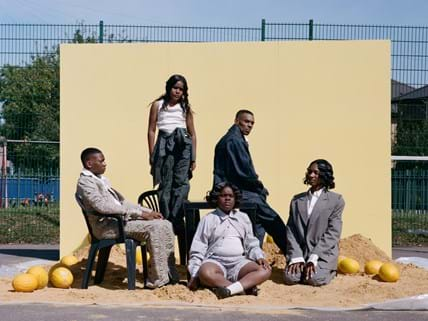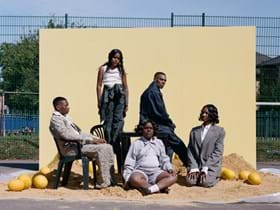At a time when proposed borders feel increasingly stringent and the freedom felt in the great outdoors is sacred, the Williams Morris Gallery's latest exhibition provides some light – but highly topical – relief. Encouraging viewers to reflect on the profound themes of freedom, exploitation, and trespass, in a society marked by inequality, the exhibition feels more relevant than ever – not only challenging audiences to question their own relationship with nature but also furthering their understanding of the way land is used to divide. 
Radical Landscapes takes audiences on a journey through the evolution of British landscapes and their significance, all while paying homage to the early environmental thinker, William Morris. With a legacy often reduced to pretty floral and fauna-printed wallpapers and stationary, the landmark William Morris Gallery, which sits majestically on the edge of Waltham Forest, aims to honour and educate visitors about the early environmentalist thinker and socialists' pioneering attitudes.
A pivotal figure in the development of environmental thought, William Morris, was a prominent artist, craftsman, and writer of the 19th century. His love for the surrounding land and his deep connection to nature laid the foundation for his work, both as a designer and as an advocate for change.
Brought to William Morris’ former home in collaboration with Tate Liverpool, the new exhibition dives deep into the natural world as a space for artistic creativity, social connections, and political and cultural activism. The small but mightly showcase, which occupies both floors of the Grade II* listed building, spans over a century of art, from the picturesque landscapes of JMW Turner to the provocative works of Claude Cahun and the contemporary perspectives of Hurvin Anderson, Derek Jarman, Jeremy Deller, and Veronica Ryan, each piece invites us to reconsider our relationship with the land and its crucial role in society.
Radical Landscapes is not confined to the gallery space. It extends its reach to the local community of Waltham Forest, an area that has undergone a transformation from a rural outpost to an urban London borough. Waltham Forest holds a special place in the heart of William Morris, as it is his birthplace and the source of his environmental and political beliefs.
In collaboration with local artists, campaigners, food banks, and allotments, a comprehensive public program runs alongside the exhibition. This program ventures beyond the gallery walls into the wetlands, forests, and green spaces of Waltham Forest, encouraging participants to reconsider their connection with local landscapes and inspiring responses to the climate crisis.
Radical Landscapes serves as a poignant reminder that art, nature, and activism can be powerful catalysts for change. This exhibition is not just a display of varied land art; it's a call to action, a tribute to a visionary like William Morris, and a celebration of the transformative power of the natural world.
The exhibition runs until February 18th. Discover more at wmgallery.org.uk...
Radical Landscapes













